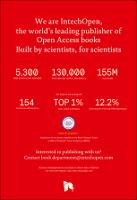Chapter Outsourcing Rules in the Public and the Private Sector
Abstract
There have been outsourcing and insourcing trends for decades. Most often benefits and costs of outsourcing are compared from the purely financial side. However, risks are those that eventually determine whether a particular product/service/asset should be outsourced or not. The aim of this chapter is to fill in the gap in the literature by analysing risk-reward or benefit-cost ratio in outsourcing decisions for services in the public and private sector. After comparing the process of strategic decision-making and pros and cons of outsourcing between the private and the public sector, a general rule of thumb is developed as a guideline for outsourcing decisions. The decision-making tree for outsourcing decisions is applicable to both typical outsourced services and outsourcing the implementation of complex projects. As a rule, the more complicated the service, the greater the chance of outsourcing. However, greater complexity of services is usually accompanied with higher risks, like in energy performance or public-private partnerships. Whenever the contract is not well prepared, outsourcing may not achieve the expected benefits and may enhance the costs and risks. Although some very specific cases cannot be generalised, the similarities in decision-making behaviour can be taken as guidance when opting for outsourcing possibilities.
Keywords
outsourcing decision, public procurement, public-private partnership, energy performance contractingDOI
10.5772/intechopen.75869Publisher
InTechOpenPublisher website
https://www.intechopen.com/Publication date and place
2018Classification
Business strategy


 Download
Download